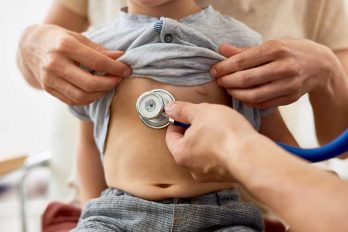The beginning of a new school year can be both thrilling and stressful for both children and their parents. However, with some planning and preparation, you can assist your child in having a successful school year. Here are some suggestions for preparing your child for the approaching school year:
Establish a school routine
Establishing a routine is one of the best methods to prepare your child for a successful school year. This may involve establishing a regular bedtime and wake-up time, arranging a healthy breakfast, and allocating time for homework. Establishing a routine can assist your child in feeling more prepared and organized, thereby reducing anxiety and tension.
Include your infant in school-supply shopping
Back-to-school purchasing can be an exciting and enjoyable experience for both children and their parents. Permit your child to select his or her own backpack, school supplies, and attire for the first day of school. This can help them feel more enthusiastic and confident about the upcoming school year.
Attend orientation and meet the instructor
Numerous institutions provide orientation sessions prior to the beginning of the school year. These sessions can help your child feel more at ease in their new school environment and introduce them to their new teacher. This is also an excellent time to ask any concerns you may have and to become acquainted with the school’s policies and procedures.
Discuss expectations
Your child will feel more prepared and motivated if you discuss expectations for the impending school year. This can include setting academic objectives, discussing behavior expectations, and discussing any extracurricular activities in which the student may be interested. Your child will feel more confident and ready for the new school year if they have a clear understanding of what is expected of them.
Promote healthful practices
Healthy practices are essential to a productive academic year. Ensure that your child receives sufficient rest, consumes a healthy diet, and engages in regular physical activity. These practices can strengthen their immune system, enhance their focus and concentration, and alleviate their tension and anxiety.
Create a specific study area
Creating a designated study area can assist your child in remaining organized and focused on academics. This area should be peaceful and devoid of distractions, with all necessary supplies and materials easily accessible. Encourage your child to use this area for assignments and studying, and to maintain its cleanliness and order.
Stay active and involved
Participating actively in your child’s education can support their academic success. Participate in school activities and meetings, assist in the classroom, and maintain regular contact with your child’s teacher. This can assist you in keeping track of your child’s progress and providing any necessary support and guidance.
By adhering to these guidelines, you can assist your child in having a successful school year. Remember that every child is unique, and it is essential to tailor your approach to satisfy their specific requirements. With perseverance, support, and a positive attitude, you can aid your child’s academic and social development.




